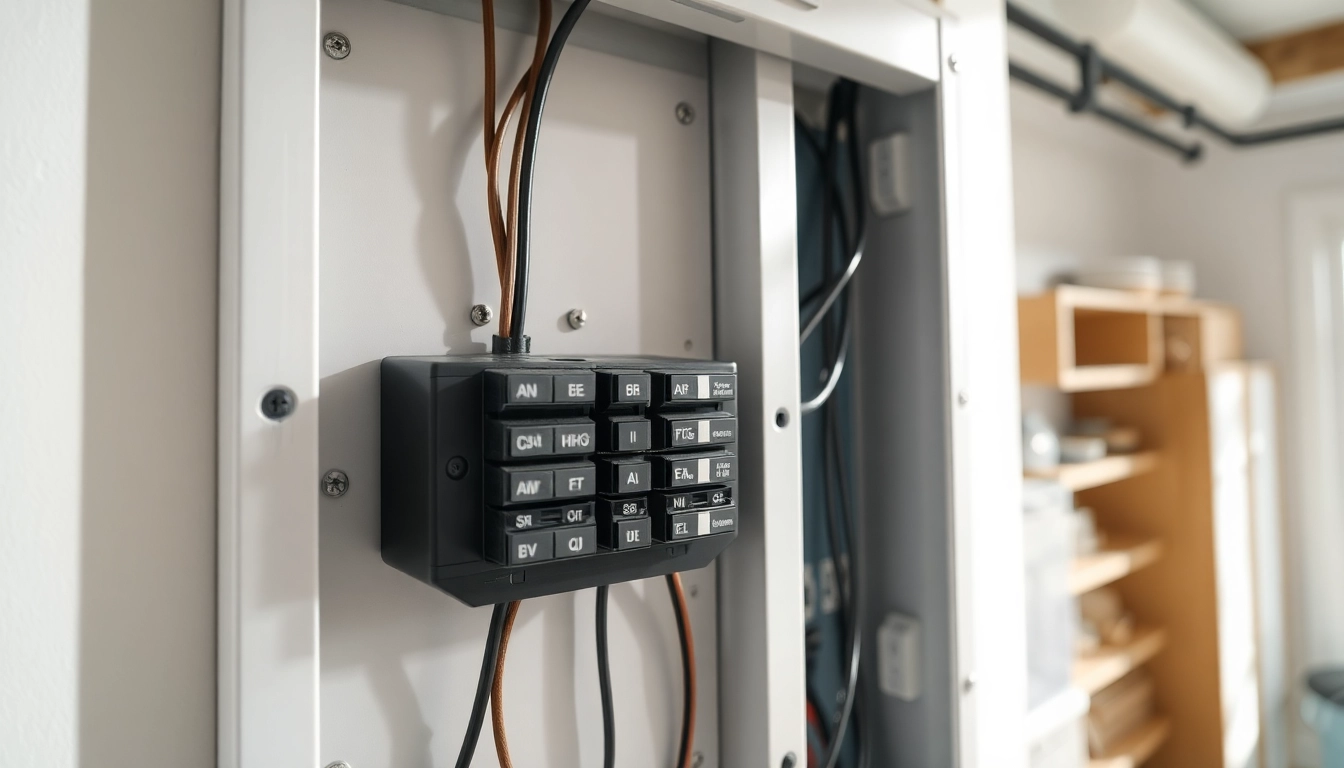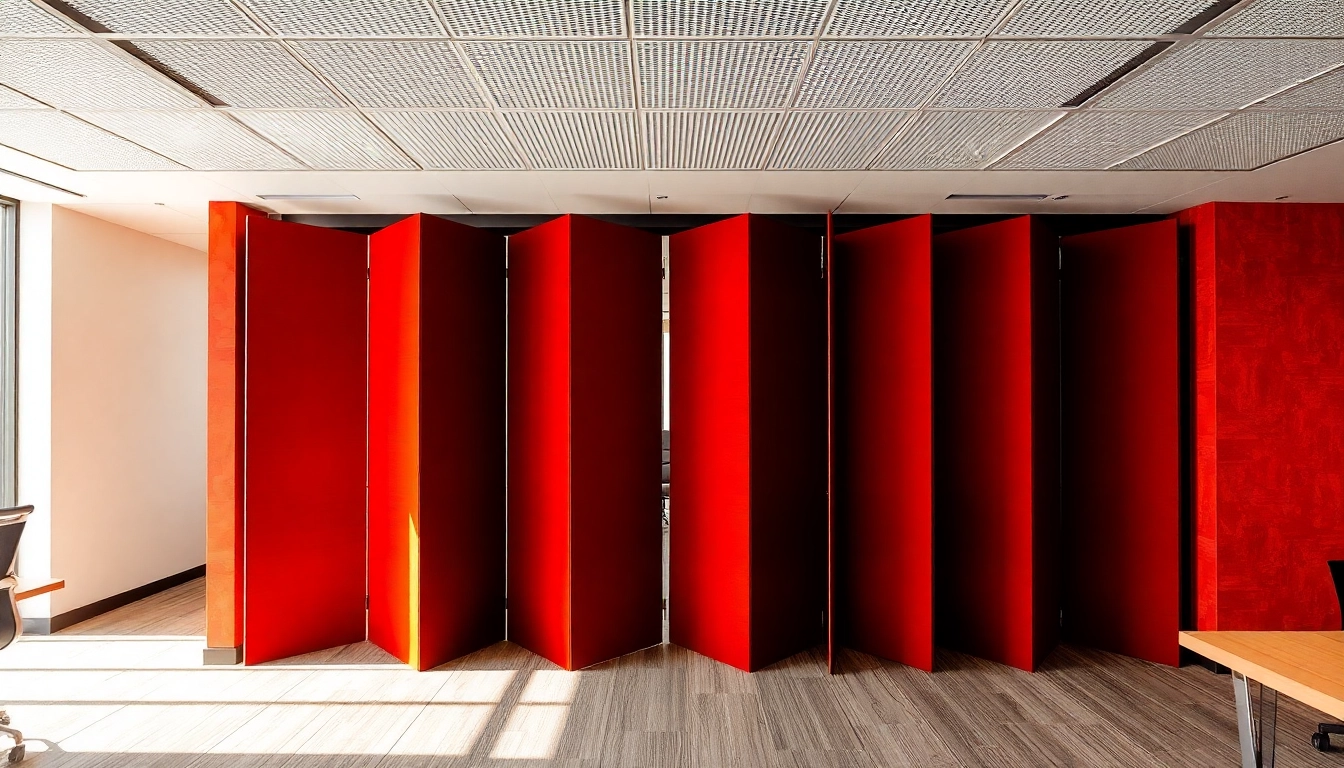Understanding the Electrical Panel: Basics and Functionality
The electrical panel serves as the heart of your home’s electrical system, making it crucial for both safety and efficiency. Often referred to as a breaker box or fuse box, it is responsible for distributing electricity throughout your household and ensuring that each circuit functions correctly. In this article, we will explore the ins and outs of electrical panels, helping you understand their components, functionality, and when it may be necessary to consider an upgrade. If you need more information on when to upgrade your electrical panel, you can check out this Electrical Panel resource.
What is an Electrical Panel?
An electrical panel is a metal box, usually mounted on a wall, that houses the electrical system for a house or building. It acts as the main point of electrical distribution, receiving power from the utility company and feeding it into different circuits that operate lights, outlets, and appliances throughout the home. It contains various components such as circuit breakers or fuses, which protect the circuits by interrupting the flow of electricity in case of malfunction, such as an overload or short circuit.
Components of an Electrical Panel
Understanding an electrical panel involves recognizing its main components:
- Main Breaker: This is the primary switch that controls the power to all circuits in the panel. It can be switched off during maintenance or emergencies.
- Branch Breakers: These smaller switches protect individual circuits, interrupting the flow of electricity if they detect overloads or faults.
- Bus Bars: These conductive bars distribute electricity from the main breaker to the branch breakers.
- Neutral and Ground Bars: These bars provide a safe path for stray electricity and protect against electrical shocks.
- Circuit Labels: Most panels have labels that help identify which circuit controls which area or appliance in the home.
How Electrical Panels Distribute Power
Electrical panels distribute power by taking the incoming electricity from the service line and routing it through the main breaker. From there, it splits into various circuits, each governed by a branch breaker. This not only ensures that different areas in your home can operate simultaneously but also protects the electrical system by preventing overload. When too much current flows through a circuit, the corresponding branch breaker will trip, cutting off the electricity and preventing damage or fire hazards.
Signs You Need to Upgrade Your Electrical Panel
Many homeowners may overlook their electrical panel until a problem arises. However, certain signs indicate that an upgrade is necessary to ensure safety and efficiency. Here are some key indicators to look out for:
Frequent Tripping of Circuit Breakers
If you find that circuit breakers frequently trip, this could indicate that your electrical panel is unable to handle the current load. Excessive demands from modern appliances often lead to this issue. If you’re regularly resetting breakers, it may be wise to consider an upgrade to accommodate your power needs more effectively.
Insufficient Power for Modern Appliances
Today’s homes rely on various high-demand appliances such as refrigerators, air conditioners, and home entertainment systems, which can place a strain on older electrical panels rated for lower amperage. If you notice flickering lights or appliances that shut off unexpectedly, consider assessing your panel’s capacity to ensure it meets modern power demands.
Visible Damage or Wear
An electrical panel should show no signs of wear, rust, or damage. If you notice discoloration, burned marks, or frayed wires, these are strong indicators that your panel is functioning improperly and could pose a severe safety hazard. Prompt action in such cases can prevent potential electrical fires and expensive reparations.
The Importance of Electrical Panel Maintenance
Maintaining your electrical panel is essential for overall safety and preventing costly issues down the road. Routine inspections and maintenance ensure that the electrical system operates as intended and that any vulnerabilities are addressed promptly.
Routine Inspections and Testing
Regular inspections of your electrical panel should be conducted by a qualified electrician. This involves testing breakers, checking for loose connections, and ensuring that all wiring is in good condition. Such preventive measures can help identify issues before they escalate into larger problems.
Cleaning and Upkeep Tips
While it’s typically not advised for homeowners to open and inspect the panel themselves, keeping the surrounding area clean and accessible can facilitate maintenance. Dust and debris can lead to overheating, so ensure that space around the electrical panel is clear and free of obstructions.
Common Maintenance Mistakes to Avoid
Some common mistakes during panel maintenance include failing to secure panels properly after inspections, ignoring strange noises or smells, and attempting DIY repairs without proper knowledge. Always consult a professional to handle serious issues, as this can prevent unsafe situations.
Choosing the Right Electrical Panel for Your Home
Choosing the right electrical panel is not just a matter of replacing an old one; it involves evaluating your home’s needs and planning for future power demands. To make an informed decision, consider the following:
Understanding Your Power Requirements
Before selecting a new electrical panel, assess your household’s current and future power needs. Calculate the total wattage of all appliances and devices that will run simultaneously and choose an appropriate amperage panel. For average homes, a 200-amp service is generally sufficient, but larger homes or those with multiple high-demand systems may require higher capacities.
Types of Electrical Panels and Their Features
There are various types of electrical panels available, two of the most common being:
- Main Breaker Panels: This type includes a main breaker that controls all circuits. It’s typically found in residential settings and is the most common choice.
- Sub-Panels: These are used to expand the electrical service for additional areas or structures on your property, allowing for better management of power distribution.
Consulting an Electrical Professional
When choosing an electrical panel, consulting a licensed electrician is essential. They can provide insights on your specific needs, recommend suitable panel features, and ensure that your installation meets all local codes and regulations.
The Cost of Upgrading Your Electrical Panel
Upgrading your electrical panel can seem daunting, especially when considering costs. Understanding potential expenses associated with electrical upgrades will help you budget appropriately.
Average Costs of New Electrical Panels
The costs of electrical panels can vary widely based on the type, brand, and amperage. Typically, homeowners can expect to spend between $750 and $2,000 for new panels, including parts and installation. Higher-end panels or specific feature sets may increase costs further.
Factors That Influence Installation Costs
Several factors can influence the overall cost of upgrading your electrical panel, including:
- Location: Installation in areas that are difficult to access or require additional work can increase costs.
- Local Codes and Permits: Depending on where you live, regulatory compliance tasks may add to your expenses.
- Old Panel Removal: If an existing panel needs extensive removal or repairs, that will likely add to the price.
Financing Options for Electrical Upgrades
If the upfront costs of upgrading your electrical panel seem too high, many financing options are available. Some utility companies offer rebates or assistance programs for electrical upgrades, while various financial institutions provide loans specifically designed for home improvements.



